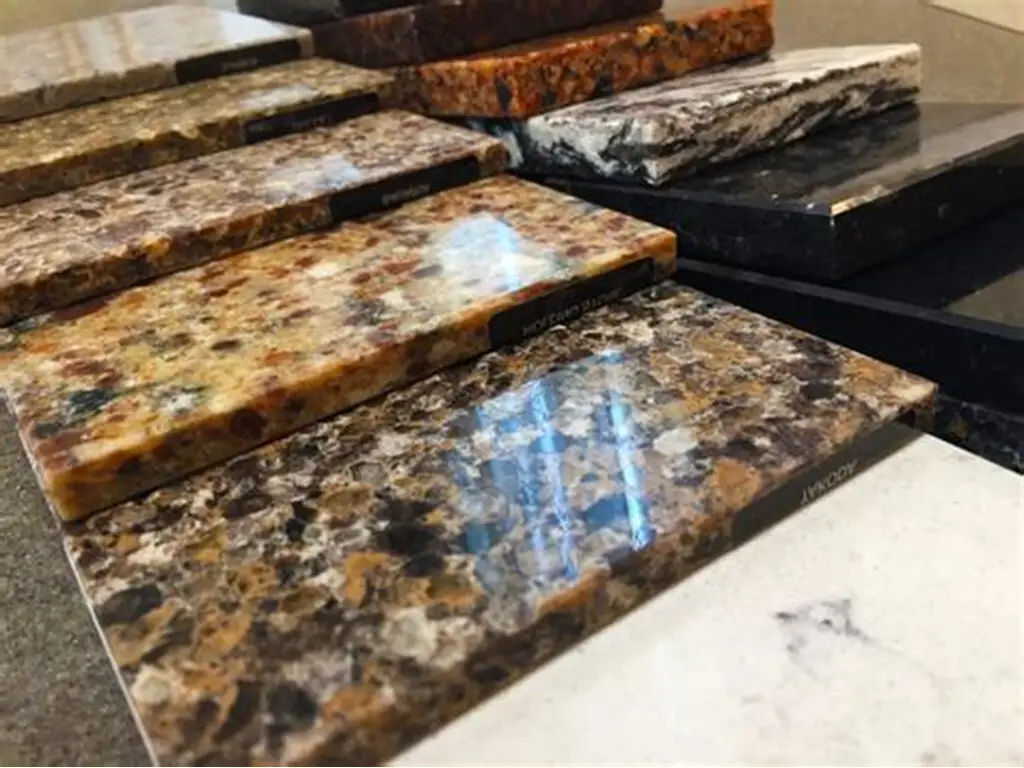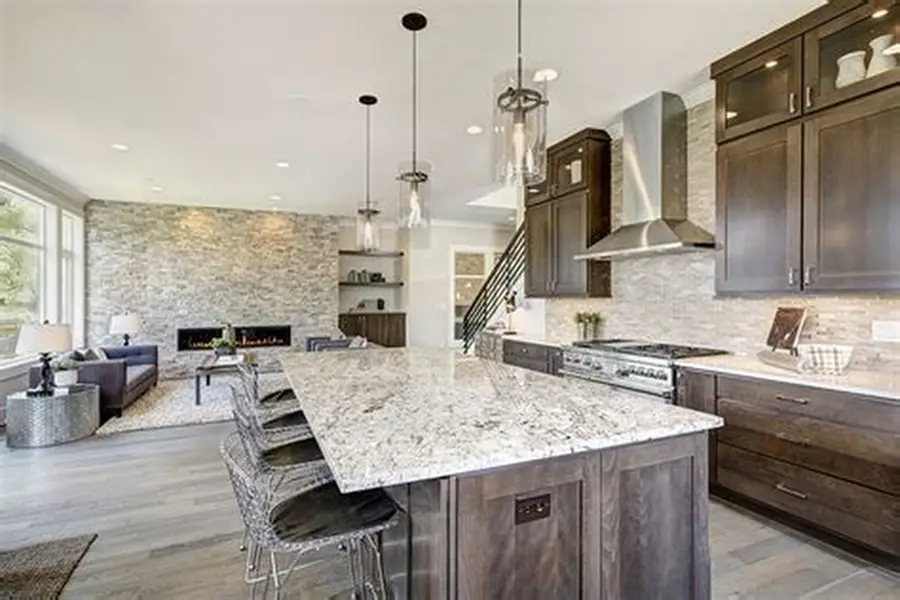Vinegar’s acidity can dull the polish, weaken the sealer, and leave a cloudy film on your beautiful granite stone. If you want spotless, streak-free, long-lasting countertops—whether you have a white granite countertop, a bold black granite countertop, or anything in between—stick to stone-safe, pH-neutral cleaners. This guide explains why vinegar is risky, what to use instead, and how to keep granite looking showroom-new with simple, evidence-based care.

Why Vinegar and Granite Don’t Mix
Granite geology & composition (quick science)
Granite is a natural igneous rock composed mainly of quartz, feldspar, and mica. Although it’s very hard, it’s also microporous. Modern penetrating sealers fill many of those pores to resist liquids and oils. But acids—including acetic acid in vinegar—can degrade the sealer and etch the polished surface over time.
How vinegar harms granite
- Etching / dull spots: Acids can microscopically roughen polished surfaces, causing a hazy, matte film—especially visible on dark tops.
- Sealer breakdown: Repeated use shortens the life of your sealer, so stains set in more easily.
- Streaks & residue: Vinegar often dries with a cloudy cast, undermining that mirror-bright finish you love.
If you’ve ever wondered why some “natural” cleaners aren’t stone-safe—this is it. Natural doesn’t equal neutral.
For a focused deep-dive on the topic, see Can You Use Vinegar on Granite?

What to Use Instead (Stone-Safe Cleaning That Works)
Daily cleaning (pH-neutral)
- Cleaner: A pH-neutral stone cleaner or warm water with 1–2 drops of dye-free dish soap.
- Tools: Soft microfiber cloths; non-scratch sponge for sticky spots.
- Method: Light mist → wipe in overlapping passes → rinse with clean water (distilled water is great on dark granite) → buff dry to finish.
Weekly/occasional disinfection
- 70% isopropyl alcohol: Mist lightly, allow 2–3 minutes of dwell time, rinse with water, then buff dry. (Skip bleach, ammonia, citrus, or other harsh chemistry.)
Quick “shine reset” for dark granite
- After routine cleaning, spray a thin mist of distilled water and buff with a dry microfiber to banish mineral spots and streaks.
Step-by-Step: Granite Cleaning Routine
1) Dry dust
Use a clean microfiber cloth to remove crumbs and grit. This prevents swirl marks on polished finishes.
2) Spray cleaner
Apply a pH-neutral stone cleaner (or warm water + a drop of soap). Avoid saturating seams.
3) Wipe methodically
Wipe from backsplash to edge in overlapping passes. Flip the cloth as it loads up.
4) Rinse (optional but recommended)
A quick pass with clean water—ideally distilled—stops soap film or mineral residue, crucial for black granite countertops.
5) Buff dry
This 10-second step is the secret to a streak-free, glassy finish on both polished and honed surfaces.
Stain & Spot Playbook (Without Vinegar)
Hard-water spots near faucets
- Soften with warm distilled water compresses for a few minutes.
- Agitate gently with a soft nylon brush and stone cleaner.
- For stubborn buildup, use a stone-safe limescale remover (labeled for natural stone).
Grease films around cooktops
- Mist stone cleaner, let it dwell 1–2 minutes, wipe.
- If needed, apply a baking soda + water paste briefly; wipe, rinse, and dry.
Oil or organic stains (olive oil, coffee, wine)
- Poultice method pulls stains from pores:
- Oil stains: baking soda + water (peanut-butter thickness).
- Organic stains: baking soda + 3% hydrogen peroxide.
- Spread ⅛–¼″ thick, cover with plastic, poke a few holes, wait 24–48 hours, remove, rinse, and repeat if needed.
- Always spot-test in an inconspicuous area.
Sealing Granite: The Other Half of “Clean”
Do granite countertops need sealer?
Yes for most installations. Sealers add stain resistance (not stain proofing). Lighter granites and honed finishes typically require more frequent sealing.
The water-drop test
- Place a teaspoon of water on the surface.
- If the spot darkens within 5–10 minutes, it’s time to reseal.
- If it beads for 30+ minutes, you’re still protected.
How often to reseal
Usually every 1–3 years, depending on color, finish, usage, and product quality.
Sealer basics
Clean thoroughly → allow to dry → apply per label → wipe all excess before it dries → allow full cure time before heavy use.
Granite vs. Quartz: Cleaning & Care Differences
- Granite (natural vs. engineered): Natural stone, requires periodic sealing; superb heat resistance (still use trivets), and can often be repolished if dulled.
- Quartz (engineered stone): Polymer-resin binder means no sealing, similar daily cleaning, but avoid high heat; permanent heat marks are possible.
If you’re comparing granite vs quartz countertops, remember that both need pH-neutral cleaners. Vinegar is a no-go for granite (and not great for many quartz finishes either because of resin/binder sensitivity).
Finish-Specific Tips (Polished, Honed, Leathered)
- Polished granite: Most resistant to staining; shows streaks if not buffed. Keep soap minimal and buff dry.
- Honed granite: More likely to show fingerprints and oils; reseal a bit more often and use distilled water rinses.
- Leathered/antiqued granite: Micro-texture holds grime—use a soft nylon brush with cleaner, rinse well, then buff.
Cost & Value: Why Proper Cleaning Pays Off
Granite countertop cost vs. care
Granite offers excellent long-term value because it’s hard, repairable (chips can often be filled), and timeless in design. Stone-safe cleaning and routine sealing protect your investment, reducing the need for professional restoration or early replacement.
Where to buy & who installs
Look for wholesale granite suppliers, local showrooms, or reputable fabricators. Proper handling matters—a lot. For professional stone transport and installation, the right equipment minimizes risk:
- Explore tools at Toolrange.
- See the Aardwolf Forklift Boom FB1-2720 for safe movement of heavy slabs during delivery and install.
Frequently Asked Questions
Can I ever use vinegar diluted on granite?
Still no. Even diluted, acetic acid can compromise sealer and dull polish. The safer path is pH-neutral.
What about glass cleaner?
Many are ammonia-based (highly alkaline). They can streak and may degrade sealers. Stick to stone-safe products.
Are disinfecting wipes okay?
Only if labeled stone-safe. Otherwise, their chemistry can be too harsh. A better route: 70% isopropyl alcohol, brief dwell, rinse, and dry.
My granite looks cloudy after vinegar—can I fix it?
Try a stone cleaner + distilled-water rinse and vigorous microfiber buffing. If dullness remains, you may need professional repolishing (especially on polished black granite).
Is it safe to stand on granite to reach high shelves?
Seams and overhangs are weak points. It’s not recommended—learn more here: Can You Stand on Granite Countertops?
Do’s & Don’ts Cheat Sheet (Bookmark This)
Do:
- Use pH-neutral stone cleaner or warm water + a drop of mild dish soap.
- Rinse (distilled water is great on dark tops).
- Buff dry with microfiber after every clean.
- Perform the water-drop test and reseal as needed.
- Treat stains with baking-soda poultices tailored to the stain type.
Don’t:
- Don’t use vinegar, lemon, citrus, or generic descalers.
- Don’t use bleach, ammonia, or abrasive powders.
- Don’t scrub with steel wool or melamine sponges on polished stone.
- Don’t drag heavy appliances across the surface; lift with care and proper equipment.
Design & Aesthetics: Keep Granite Looking Its Best
Whether your kitchen features granite backsplash designs, waterfall edges, or dramatic movement, stone-safe cleaning preserves depth, clarity, and color. For busy households, granite remains a top choice thanks to durability, repairability, and a classic look that pairs well with most cabinet colors—from crisp white Shaker to rich walnut.
The Final Word: Vinegar Is Great—Just Not for Granite
Vinegar has a place in home cleaning, but not on granite countertops. To protect the sealer, prevent haze, and keep your finish bright and reflective, commit to pH-neutral cleaners, minimal soap, clean-water rinses, and a quick microfiber buff. That simple routine—plus periodic sealing—delivers the low-maintenance, high-style performance homeowners expect from granite.
Useful Links & Further Reading
- Pro stone handling & jobsite gear: Toolrange
- Professional lifting accessory: Aardwolf Forklift Boom FB1-2720
- Deep dive reminder: Can You Use Vinegar on Granite?
- Safety Q&A: Can You Stand on Granite Countertops?

